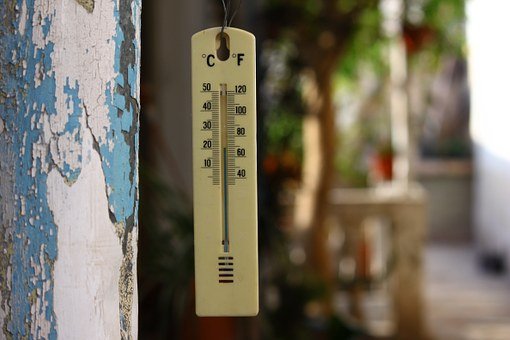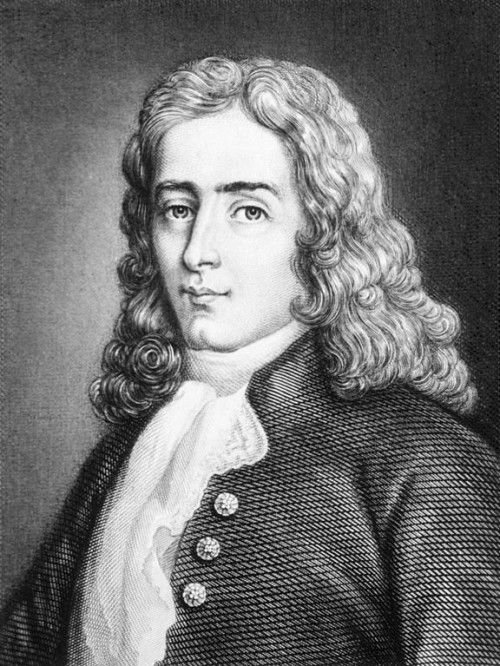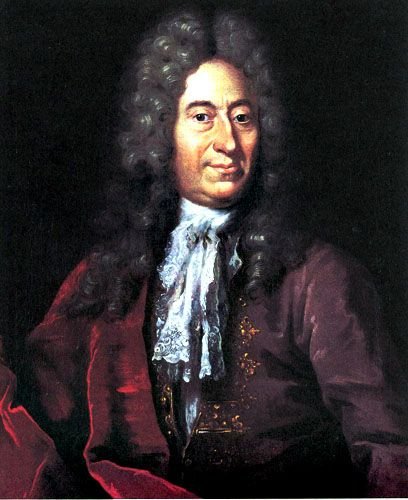Men of Various Degrees: Newton, Réaumur, Celsius, Rømer, Fahrenheit, Kelvin and Rankine

source: Pixabay
Isaac Newton

Isaac Newton
source
Isaac Newton, the celebrated English scientist, need no introduction.
In 1701, Newton created a thermometer, using linseed oil as the thermometric material. He used only one reference point: zero as "the heat of air in winter at which water begins to freeze" (Calor aeris hyberni ubi aqua incipit gelu rigescere). There was no second reference point. He wrote numbers on a scale on his thermometer, and record various values. For example, the boiling point of water was 33.
So, using Newton scale, you could talk of "degree Newton" with the symbol °N.
René Antoine Ferchault de Réaumur

René de Réaumur
source
René de Réaumur was a French scientist born in 1683. He was a prodigy and was elected to the French Académie des Sciences before the age of 25. He contributed to many different branches of science, in particular the [study of insects])https://en.wikipedia.org/wiki/Entomology).
In 1730, he constructed
a thermometer based on the principle of taking the freezing point of water as 0°, and graduating the tube into degrees each of which was one-thousandth of the volume contained by the bulb and tube up to the zero mark. It was an accident dependent on the particular alcohol employed which made the boiling-point of water 80°; mercurial thermometers graduated into 80 equal parts between the freezing- and boiling-points of water are named Réaumur thermometers but diverge from his design and intention.
Réaumur thermometers, graduated in Réaumur degrees (°Ré), were in widespread use in Europe, particularly in France, Germany and Russia. However, their uses faded during the XIXth century, after the creation of the metric system.
It seems that they are still in use nowadays, probably for historical reason.
In the Netherlands the Réaumur thermometer is used when cooking sugar syrup for desserts and sweets.
Anders Celsius

Anders Celsius
source
Anders Celsius was a Swedish astronomer and physicist, born in 1701.
He was professor of astronomy at Uppsala University and founded the Uppsala Astronomical Observatory.
In 1742, he proposed to measure temperatures with two fixed points: 100° for the freezing point of water (similar to Réaumur) and 0° for the boiling point of water at one standard atmosphere. Yes, in Celsius's initial proposal, the temperature was decreasing when it was becoming hotter.
Two other scientists Jean-Pierre Christin and Carolus Linnaeus proposed independently to reverse the Celsius's scale and to use 0° for the freezing point of water and 100° for the boiling point of water.
When the French Revolution created the initial metric system, they used this reversed Celsius's scale and called the unit the "degree centigrade" (symbol: °C). That was soon adopted in many European countries. In 1948, international committees decided to formally rename the degree centigrade to "degree Celsius", with the same symbol °C.
When I was in elementary school in France in the 1950s, I was taught about the degree centigrade, never about the degree Celsius.
Ole Rømer

Ole Rømer
source
Ole Rømer was a Danish astronomer, born 1n 1644. Rømer was professor of astronomy at the University of Copenhagen.
From his observations of the eclipses of Jupiter's moon Io, both in Copenhagen and in Paris, the first value of the speed of light were deduced. In 1700, Rømer also was the one that convinced the king of Danemark-Norway to adopt the Gregorian calendar.
In 1701, practically at the same time as when Newton built his thermometer, Rømer proposed a temperature scale where the freezing point of water would be 7.5 degrees and the boiling point of water, 60 degrees. This is the Rømer scale. The symbol is °Rø.
The Rømer scale is no longer in use but is of some historical importance, as it is the inspiration for the Fahrenheit scale.
Daniel Gabriel Fahrenheit

Daniel Gabriel Fahrenheit
source
Daniel Gabriel Fahrenheit was a physicist and engineer, born in 1686 in the polish city of Danzig (now Gdańsk), from German parents. Fahrenheit spent most of his career in the Dutch Republic.
In 1717, Fahrenheit settled in The Hague as a glassblower, and made barometers, altimeters and thermometers. Starting in 1718, he taught chemistry in Amsterdam. In 1724, Fahrenheit visited England and was elected a Fellow of the Royal Society.
In 1708, Fahrenheit visited Ole Rømer and decided later to improve on the Rømer scale. To eliminate annoying fractions, he multiplied the number of degrees by 4 and in 1724, he proposed his own temperature scale, the Fahrenheit scale. Symbol is °F. The Fahrenheit scale has been modified several times, until it got its current definition: water freezes at 32°F and boils at 212°F.
The Fahrenheit scale was in use in most English speaking countries until the 1960s. After that, usually during their metrication processes, most of these countries, with the notable exception of the United States of America, switched to the Celsius scale. For example, in Canada, the official temperature scale is the Celsius one, but most thermometers display the temperature in both Celsius and Fahrenheit degrees.
William Thomson, Lord Kelvin

Lord Kelvin
source
Wi8lliam Thomson was a Scots-Irish mathematical physicist and engineer, born in Belfast in 1824. In 1846, at the age of 22, he was appointed to the chair of natural philosophy in the University of Glasgow, where he did important work in the mathematical analysis of electricity and formulation of the first and second laws of thermodynamics.
Thomson was knighted in 1866 by Queen Victoria, becoming Sir William Thomson. Then, in 1892, he was ennobled and became the 1st Baron Kelvin.
In 1848, Lord Kelvin wrote a paper On an Absolute Thermometric Scale talking about the need for a scale whereby "infinite cold" (known now as absolute zero) was the beginning of the temperature scale, and which used the degree Celsius for its unit increment. He calculated that absolute zero was equivalent to −273 °C on the air thermometers of the time, which was a pretty good approximation, as it is in fact -273.15 °C.
This temperature scale is the Kelvin scale. Up to 1967 the unit was named the degree Kelvin, symbol °K. Then the 13th General Conference on Weights and Measures decided to rename the unit simply as "kelvin", with the symbol K.
William John Macquorn Rankine

Macquorn Rankine
source
Macquorn Rankine was a Scottish mechanical engineer born in 1820. He also did contributing work to physics, in particular to the science of thermodynamics. In 1855 he became professor of civil engineering and mechanics at the University of Glasgow.
In 1859, one year after the Lord Kelvin's paper that was the origin of the Kelvin scale, Rankine proposed an absolute temperature scale with the same absolute 0 as the Kelvin scale, but with the same unit as the Fahrenheit degree. This is the Rankine scale, with the symbol °Ra. The water freezing point is at 491.67 °Ra. To convert a temperature in °F to °Ra, you need to add 459.67,
In some engineering fields, in the United States, the temperature is measured using the Rankine scale.
Those are the main temperature scales, where it is hotter when the temperature increases.
Thank you for reading, @vcelier.

source: Pixabay
